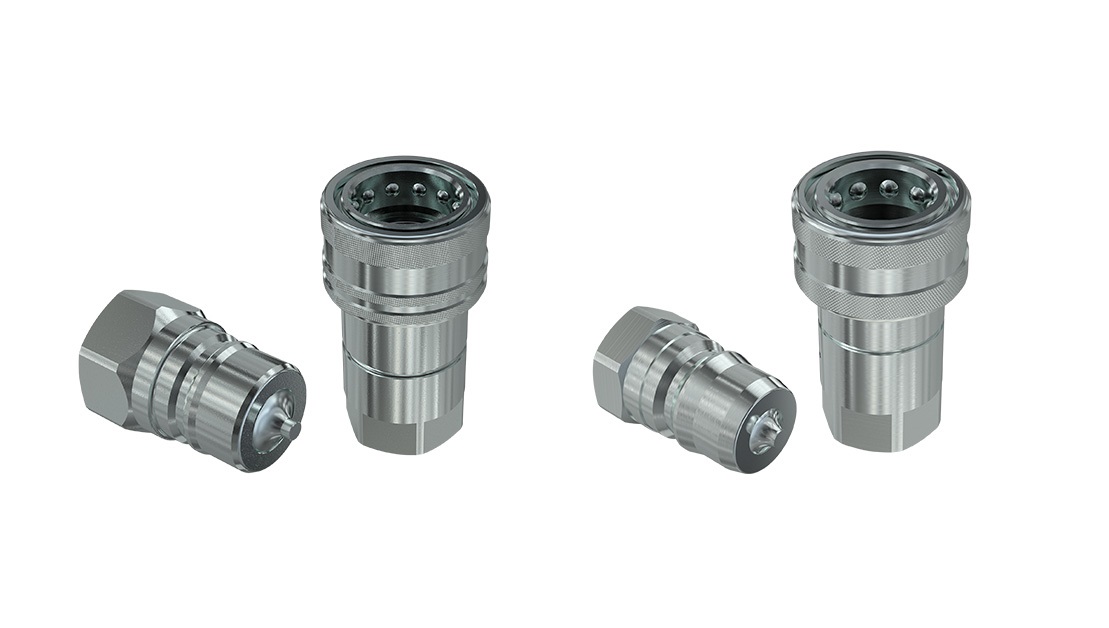
ISO 7241 is an International Standard published by the International Organization for Standardization (ISO) and managed by a Technical Committee (ISO/TC 131) whose Faster, as a world leader in the design and manufacture of quick couplings, is a proud member of; it specifies interface dimensions and basic performance requirements for two series of hydraulic quick couplings (named as “A” and “B”) widely used all over the World and providing same technological advantages.
What is an ISO coupler?
More in general, an ISO coupler is a quick coupling whose dimensions are in compliance with the requirements set by a specific ISO Standard and whose technical performances meet or exceed the values established by that Standard. The common compliance to the same International Standard, such as ISO 16028 or ISO 7241, gives 100% confidence that the mix of different branded coupler halves won’t result in issues with mechanical connection of the two halves, fluid leaks or, as long as the product series is suitable for the application, failures due to unsatisfactory mechanical resistance of one of the two halves. When it’s necessary to replace a quick coupling half, the search of a new part is pretty easy when dealing with couplers complying with an ISO Standard; this feature greatly helps to reduce machine downtime and operating costs. Further, when it’s possible to rely on an ISO standard, OEM companies have the opportunity to implement a dual- or a multiple-sourcing strategy for their supply chain, mitigating risks deriving by delayed deliveries or quality problems from a single supplier.
Upgrade Your Hydraulic Systems with Reliable ISO 7241 Standard Couplings.
Our ISO 7241 Series A and B couplings provide reliable and efficient solutions for your hydraulic system needs.
View Products
What is the difference between ISO 7241 A and B?
In terms of design the two profiles look quite similar actually, even though experts can distinguish them at first sight. ISO 7241 provides dimensional requirements for the two series; it’s interesting to notice that such dimensions refer to the male half only; basically, each female half that is connectable to a ISO 7241 A or ISO 7241 B male half and matches or exceed the established performance requirements is considered conform to that Standard. About applications and geographical distribution, Series A is massively used in European countries and is preferred worldwide especially for agricultural and forestry machinery applications whereas Series B is used predominantly in North America and in the chemical industry.
|
ISO 7241 A
.png)
|
ISO 7241 B
.png)
|
|
ISO 7241 A

|
ISO 7241 B

|
The main characteristics of ISO 7241 quick couplings
ISO 7241 quick couplings are quite basic products which ensure a proven design as well as a quite intuitive use and a generally affordable price. The female half is equipped with a retractable sleeve that acts as a locking mechanism holding together the two halves of the quick coupling thanks to 10 - 12 latching balls which are pressed against a groove machined on the male half coupling. On the end of both the coupling halves there’s a shut-off valve which blocks fluid spillage soon after the coupler gets disconnected. It’s also possible to find on the market single shut-off or no shut-off versions which are however compliant with ISO 7241, as they match dimensional and performing requirements. Over the years the poppet style for the shut-off valves has become more and more popular, although in some regions the older ball valve style is still sometimes preferred by OEM’s and operators. No pressure relief feature is provided by these couplings, hence their use is recommended on applications where connection and disconnection maneuvers are expected to happen with zero pressure in the circuit. Performance values specified in this Standard apply to carbon steel quick couplings, even though the use of other raw materials is admitted.
Faster offers an absolutely complete range of ISO 7241 quick couplings, that includes all of the sizes covered by that Standard as well as some versions characterized by different raw materials (e.g: brass or AISI 316 stainless steel) or plating treatments (e.g.: Zinck-Nickel) to suit applications typical of specific markets or regions.
Ready to learn more about our products?
Our team is here to guide you and offer tailored solutions to fit your needs.
Contact Us